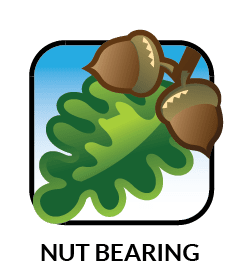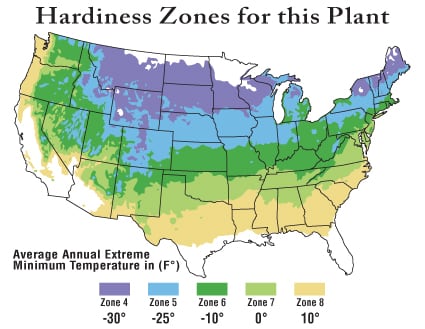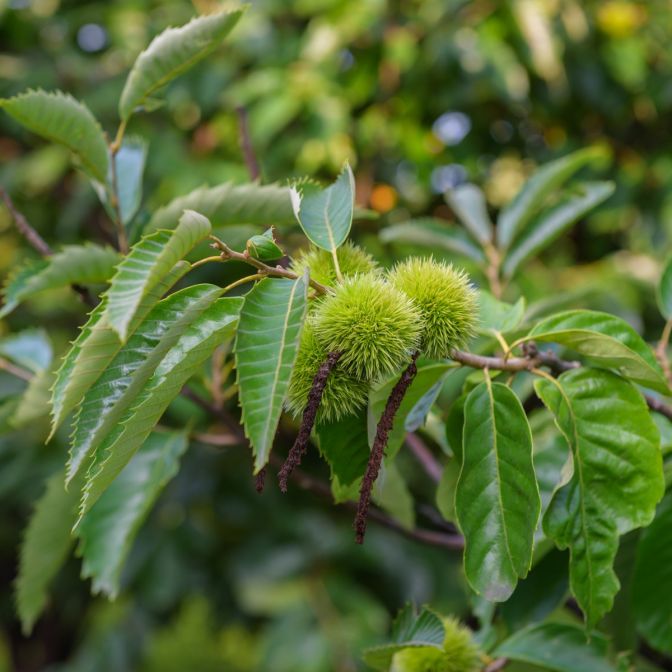Chinese Chestnut
Plant Type: Dormant, bare-root
Zones: 4-8
Soil Type: Loamy & Sandy Soils
Site Selection: Full Sun, Partial Sun
Mature Height & Width: 40-60' Height and 40-50' Spread
Growth Rate: Moderate - 12-24" per year on average
Moisture Requirements: Average






Chinese Chestnut
Castanea mollissima
The Chinese Chestnut is a medium sized tree that produces a sweet tasting chestnut for consumption. This tree is very blight resistant, with a low branching, wide spreading growth habit. Green leaves turn to yellow, gold and brown in autumn. To ensure proper pollination and highest chestnut yield, plant at least two Chinese Chestnut trees. This tree should produce chestnuts within 3 to 5 years of planting. Drought tolerant once established.
- The Chinese Chestnut that we sell is not a cultivar, but rather pure Castanea mollisma. Named cultivars have been selected for certain qualities, isolated and then bred with others of the same characteristics. Our Chinese chestnuts would be considered pure, “descendants” of the natives that were originally imported from Asia.
- The nuts of the Chinese Chestnut are borne inside spiny burs that split open when the nuts are ripe.
- The Chinese Chestnut is a great addition to your hunting land if you are trying to hold deer or turkey, a great natural food source.
- Chestnuts are a healthy, low-fat food ingredient that can be incorporated into a wide range of dishes — from soups, to poultry stuffing, to pancakes, muffins and pastries (using chestnut flour).
Common uses for the Chinese Chestnut include:
- Attracting deer and turkey for hunting or wildlife viewing
- Personal or commercial chestnut production
- Using chestnuts in cooking and baking
- Shade tree with wildlife benefits
- Honoring the tradition of roasting chestnuts for consumption
Wildlife such as deer, turkey and almost every kind of squirrel love the chestnuts. This tree should be part of any long term plan which involves the natural production of deer food on your hunting land.





